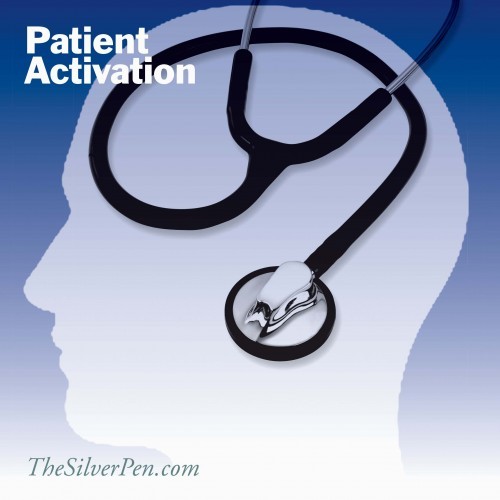Patient Activation: How ‘Activated’ Are You?
Hello from Charlotte! I’m on the road (again!) giving talks and promoting the book. Though I am pretty tired from the busyness that has been all-emcompassing this spring, I am having a blast meeting people and sharing stories.
In my talks, one of the things that I (over)emphasize is the need for each and every one of us to take an active role in our health care, to become fully engaged. This is so so so important! I am always baffled by how much time and energy we spend on buying a house, for example (making sure that inspections are done and that every “t” is crossed and every “i” is dotted), but how little time we spend engaging with our health care teams.
So, that is what this post is about: how active you/we patients are. Let me begin by asking you the following questions. How strongly do you agree or disagree with these statements?
- Taking an active role in my own health care is the most important thing that affects my health.
- I know what each of my prescribed medications does.
- I am confident that I can tell a doctor about concerns I have even when he or she doesn’t ask.
- I have been able to keep up with lifestyle changes, like eating right or exercising.
- I know how to prevent problems with my health.*
The thing of it is that today, doctors are using questions like these to test their patients ‘Activation’ level. The Patient Activation Measure (PAM) test measures how involved and proactive patients will be in their own health care process. The results allow doctors to better communicate with their patients through customizing information based on their activation level. If health care professionals are aware of how engaged their patients are, they will have a better understanding of the amount of support their patients need.
The Silver Lining is that this will allow patients to have more confidence in their ability to change their behavior and be proactive in their own health care plan. As a patients’ activation level increases, s/he will be more adherent to medications, more likely to eat healthier and engage in physical activity, more present in the workforce, more satisfied in their job, less likely to use the ER or be readmitted post discharge, and more engaged with their clinicians.
Based on their scores, patients are categorized into one of four activation levels. Those within the lowest activation level usually lack confidence and problem-solving ability. They typically fail to take their medication, skip preventative screenings, and end up back in the hospital soon after they have been discharged. Those within the highest activation level are more highly engaged in their health care process, which ultimately leads to a higher probability of the patient reaching their health care goals and avoiding readmission. Research shows that patients within the lowest activation level have twice the risk of a 30-day readmission compared to patients with higher activation scores.
While patient activation scores do not provide a solution to the actual health concerns of each patient, they do allow clinicians to further understand the needs and level of support that their patients need. No matter which level of patient activation you fall under, the Silver Lining is that health care professionals using PAM will meet you exactly where you are and assist you in your journey in ways that are customized to your own personal needs.
I hope that this is motivating! It sure is for me!
* Questions adapted from The Wall Street Journal

